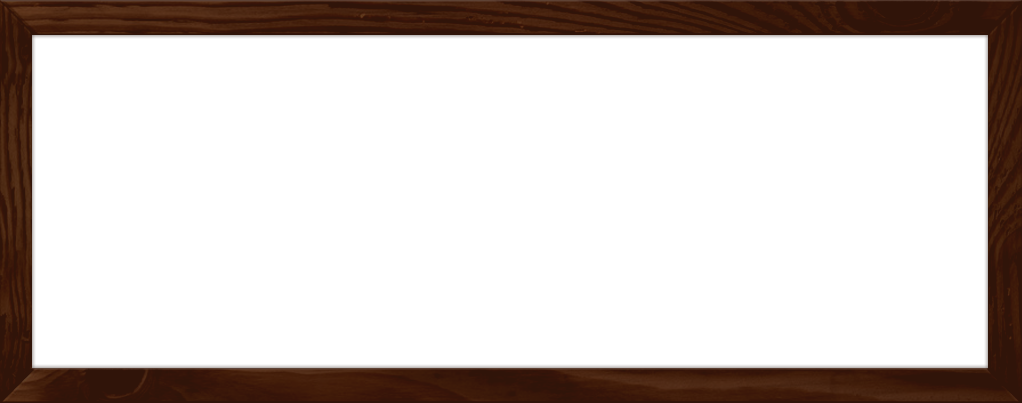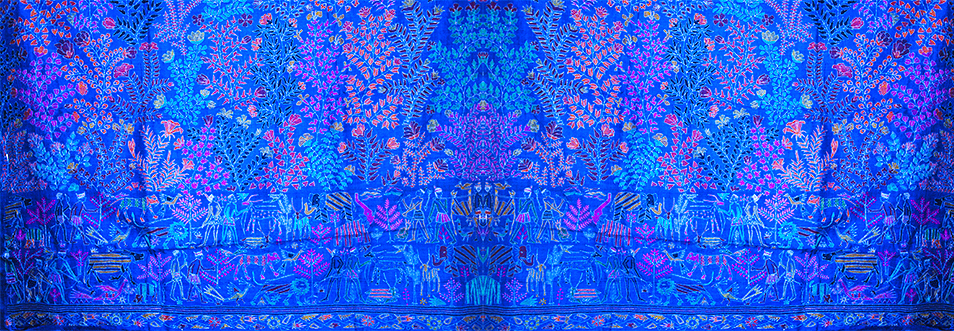
A Fashion Statement On The Edge
Kantha art needs a big push on multiple fronts for the needle art industry to sustain itself and prosper. Are we ready to take that responsibility? Artmitul.com investigates.
A red dirt road opens its arms where a narrow metal road ends abruptly without any warning, rhyme or reason. The small sedan bumps nervously couple of times before settling down to the new realities. We are headed into a hamlet in the underbelly of the Birbhum dirstrict of West Bengal to hunker down with Kantha embroidery artisans to see how they divide their time between running errands and daily chores and get back into doing flawless embroidery work.
The road gets narrower and the tyres of the car are barely clinging to the dirt, just about managing to skirt the ditches that get deeper on the sides. The Birbhum sun has a sharp, whiplash feel, as it beats down harder all the time. The good thing is the telephone network does not snap and to our satisfaction we know that we are not getting away from our destination.
Kantha is one the oldest forms of embroidery that has existed in India from the pre Vedic times. The evolution and transformation of this art of embroidery to its modern form came through centuries of practising needle work at homes of both the rich and the poor of Bengal, a homogeneous geographic landmass of people that is now divided into West Bengal in India and Bangladesh.
Significantly, Kantha embroidery work has been so intrinsic and knit with the culture and tradition of Bengal that there are instances when a granddaughter is asked by relatives which kantha work she received in inheritance from her grandmother after the latter’s death. It is material asset that is highly coveted in certain parts of Bengal.
A flawless kantha work is a treasure, an asset, and more so if the fabric and the dye are top grade and the thread used is the best. Of course, the quality of embroidery and the storytelling of the art is of equal importance if not more.
A massive burgundy coloured bull pulls up in front of us. He stands and gives a cold stare. There is a swagger about him which is not comforting. Someone advises to switch off the engine as there is no room to reverse. We sweat it out, waiting for something to happen.
It is midmorning and quiet, except for occasional screeching parrots and chirping sparrows. Our senses back, we make few frantic phone calls for help. In a while we have half a dozen men trying to coax the huge animal away from the road. They seem past masters in this work and patiently chip away, until the bull lets go and moves on. We drive ahead, a few hundred metres more, and park under a tree on an embankment.
A woman, with her head covered, assures us that the car is safe. Our destination, across the path, is a cluster of mud huts with thatched roof made of straw. We walk along a squeezed alleyway and enter a property through a makeshift gateway. Inside, it is cool. There is a water well, a cow shed and goats tethered under a leafy shed.
We spy a couple of women working intensely on the verandah of the two-storeyed mud hut. They are glued on their needle work, and as we come closer we can see a flock of birds taking shape among bushes and branches in a sprawled tussar fabric. The artisans greet us and get back to work. We sit down near them and sip our lemon sherbet. It will be a long day.
One of the earliest references of Kantha embroidery as we know it today can be traced to Chaitanya Charitamrita, a 500-year-old book, written by Vaishnavite poet Krishnadas Kaviraj Goswami. Scholars have, however, suggested that the origins of the Kantha needle work can be traced back even before the ancient Harrapan civilisation, although there are no hard evidences as such because of the perishable nature of the fabric.
It is significant that Kantha in Sanskrit means rags, and it is very likely that women in those days saw a value in embroidering on the discarded clothes or garments, so these could be reused in a different format. Even as Kantha emerged as an artform through the ages, the embroidery work continued to mostly depict rural life and traditions. The motifs mostly had the same birds, animals, nature and daily life sewn on the fabric. Only recently, successful designers have embarked on more ambitious and expensive projects involving complex motifs, thoughts and storytelling.
It is said that in first half of the 20th century Noble Laureate Rabindranath Tagore thought that Kantha work could emancipate rural women of Bengal from poverty and empower them. His thoughts of introducing Kantha work on sarees for rural women in and around Shantiniketan later found lots of inspiration in Kala Bhavan of Vishwa Bharati University, and in the late 1960s and early 1970s Bengal saw the first signs of Katha fashion emerging among select urbanity. There has been no looking back ever since for Kantha needle work.
We have been having a lively conversation on the use of anchor and dolly threads with the artisans when our host intercedes and suggests snacking, tea, Sandesh and some puffed rice, making up for a modest meal early noon. We agree. He starts talking about how he built these mud houses in the 1980s and they never gave him any trouble, summer, winter or even through the fierce monsoon. The straw roofs must change every few years, say every five years. Nothing else require extra care.
He also shows off the tullu water pump he has installed to draw up water from the well and emphasises that the water is bacteria-free. But we don’t take chances. We have our bottled water. While there is no rancour or malice as we sip our bottled water, the host does complain of the back breaking work his family had to undergo, in the last two decades, to come up to where they have. Things have improved, of course. Roads and electricity have come thus far and has allayed hardship of walking on muddy gullies with Katha sarees and stoles on their backs in full monsoon to reach the nearest towns for transporting to cities. Schools and colleges are also not that far these days that one cannot access these during the day. Yet, teachers are an issue as whole schools can have half a dozen teachers or even less.
Ironically the big fashion houses and boutiques of Kolkata that commission or purchase Kantha sarees from these artisans have been the real winners over the years, while the latter have continued to live in their mud houses as they had been doing in Tagore’s time and much before. While the basic necessities have been met, the aspiration for better quality of life has been pushing these artisans towards generating more revenues, or in other words more value for their work.
The implications of continued impoverishment of artisans while their art is flourishing, could go ultimately two ways: one, is for the industry’s demise as production gets throttled and becomes unsustainable; two, is finding a way to pay the artisans more to keep the ship on even keel and sailing.
One of our major areas of discussion planned for later in the afternoon is this complex and sensitive subject with our host. And of course, our focus is to keep the industry alive and healthy. But to pay more and how much more is a question. The answer is not simple, or probably, there is no definite answer at all when it comes to a work of art. But we know we must pay more to these artisans or they will stop sewing and go off to something more worthwhile. We cannot allow that to happen, as Kantha is part of our culture, history and civilisation and its demise is simply inconceivable.
If you have any views, please write to us at infoartmitul@gmail.com . You are also welcome to contribute your own article. Publishing will be at the discretion of the Artmitul.com media team. Copyright for articles submitted to Artmitul.com will rest with respective authors, but first right of use with Artmitul.com. However, Artmitul.com will not be responsible for any copyright infringements by contributors. Authors are required to take relevant approvals for any copyright materials they may use in their work submitted to Artmitul.com. Authors also accept that Artmitul.com will have the right to edit any submitted article or letter or view for language.




